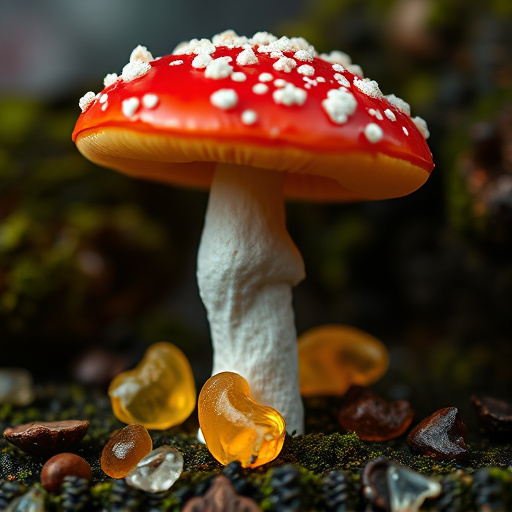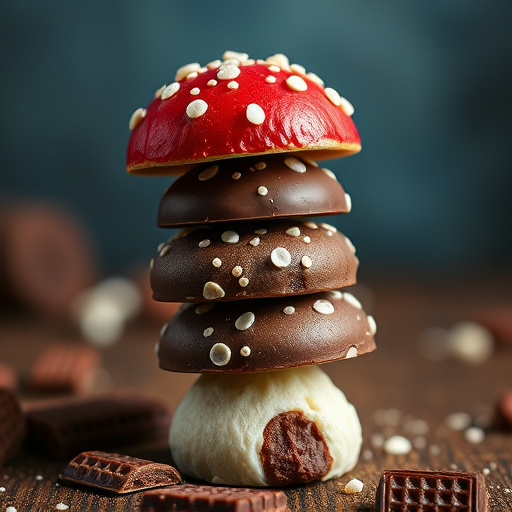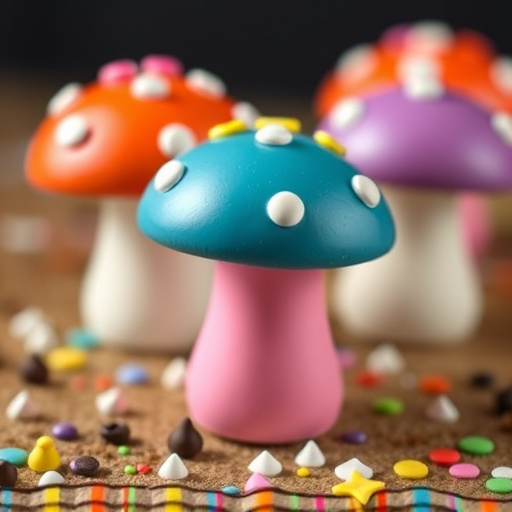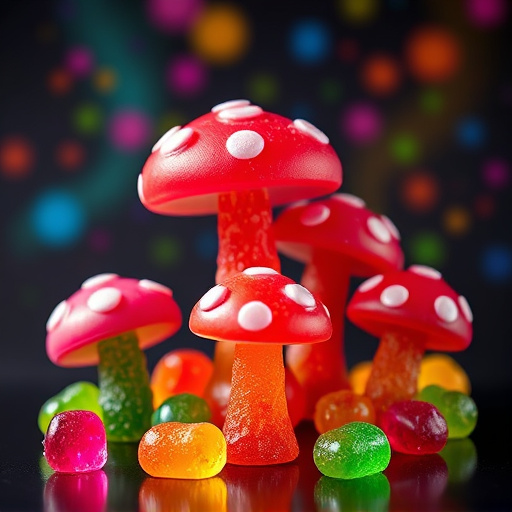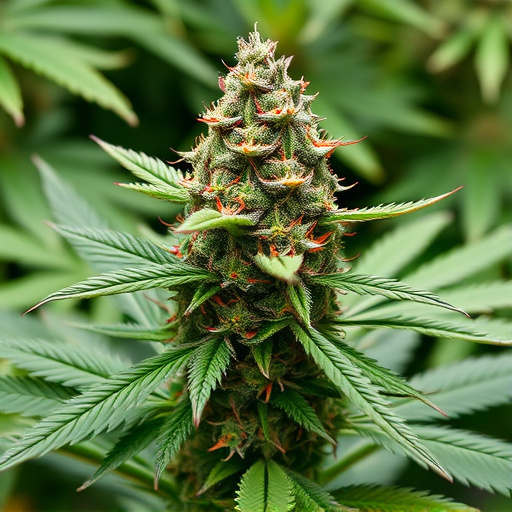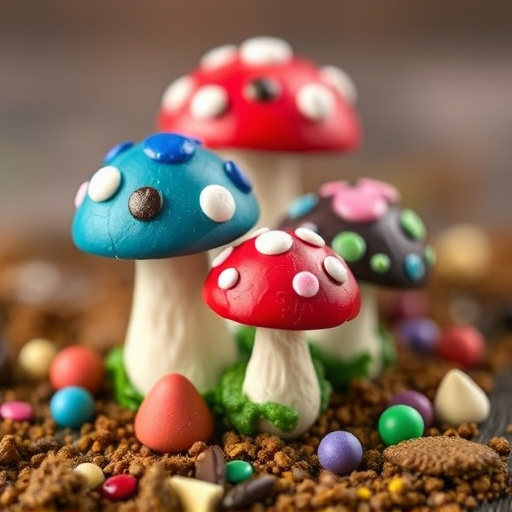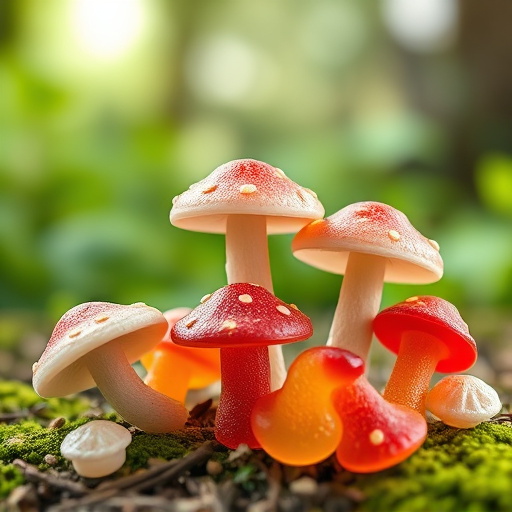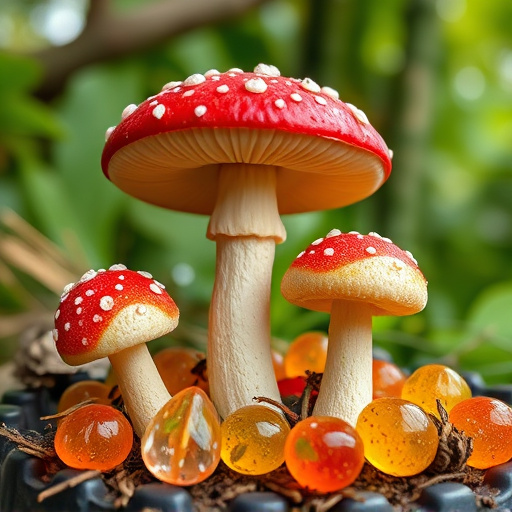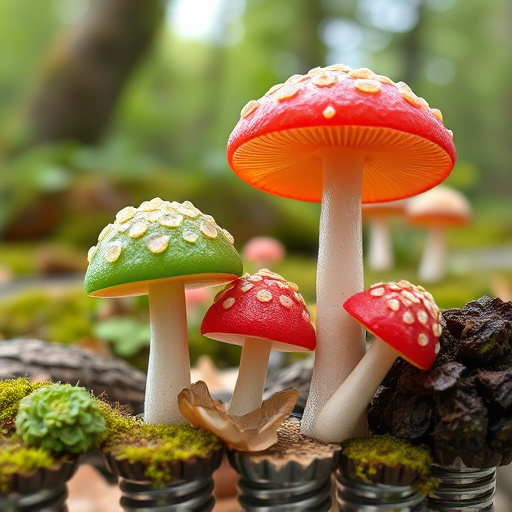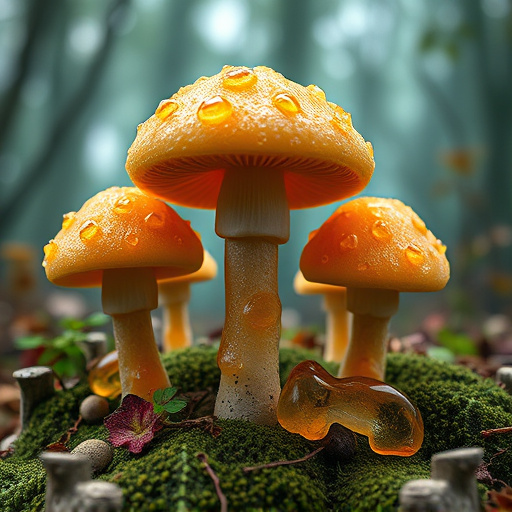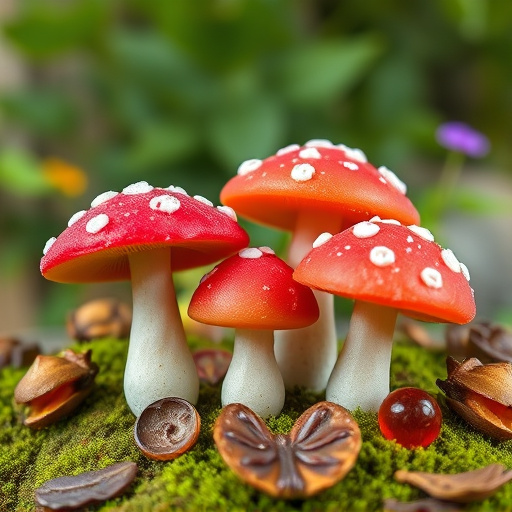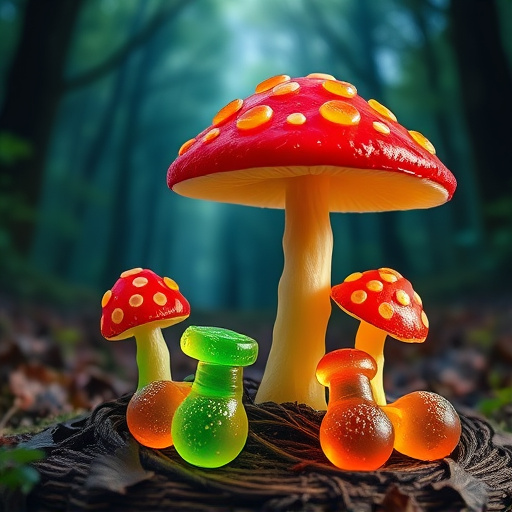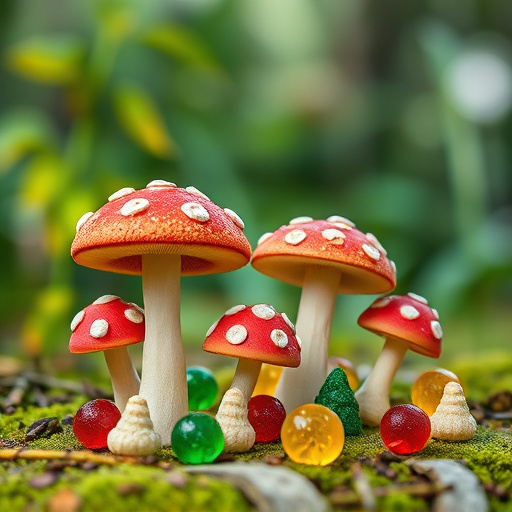The Science Behind Magic Mushroom Gummies delves into the therapeutic potential of psilocybin and psilocin, active compounds found in Psilocybin mushrooms. These natural substances interact with brain serotonin receptors, leading to altered states, boosted creativity, and intense emotional responses. Research explores their effectiveness in treating mental health issues like depression, anxiety, and PTSD. "Magic mushroom gummies" offer a modern, controlled dosing method by extracting these compounds into edible forms, appealing to those seeking alternative therapeutic experiences while uncovering the science behind their magic.
“Unveiling the Science Behind Magic Mushroom Gummies: A Lab-Tested Revolution
In recent years, magic mushrooms have emerged as a subject of interest in the realm of psychedelic research. This article delves into the fascinating world of lab-tested magic mushroom gummies—a game-changer in the industry. We’ll first explore the nature of Psilocybin mushrooms and their potent active compounds, psilocybin and psilocin. Then, we’ll navigate the intricate process of creating these gummies in a controlled laboratory environment, ensuring quality and safety. Subsequently, we’ll examine the therapeutic benefits, potential risks, and future implications of this innovative product.”
- Understanding Magic Mushrooms and Their Active Compounds
- – An overview of Psilocybin mushrooms and their psychological effects
- – The key active compounds: Psilocybin and Psilocin
Understanding Magic Mushrooms and Their Active Compounds
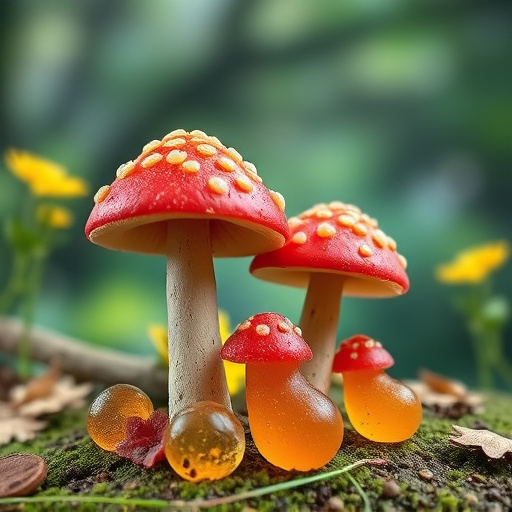
Magic mushrooms, scientifically known as Psilocybin mushrooms, have been a subject of interest for both their mystical cultural significance and their potential therapeutic benefits. These fungi contain psilocybin and psilocin, two active compounds that have gained significant attention in recent years. The science behind magic mushroom gummies involves the extraction of these compounds to create edible forms, such as gummies, offering a convenient and controlled way to experience their effects.
Understanding the role of psilocybin and psilocin is key to comprehending the science behind magic mushroom gummies. These compounds act on serotonin receptors in the brain, leading to altered states of consciousness, enhanced creativity, and profound emotional experiences. Research has explored their potential in treating mental health conditions like depression, anxiety, and PTSD, making this ancient botanical a modern focus for psychological research.
– An overview of Psilocybin mushrooms and their psychological effects
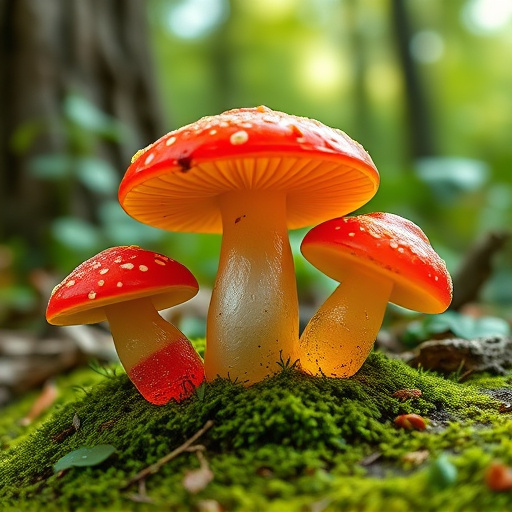
Psilocybin mushrooms, often referred to as “magic mushrooms,” have been a subject of interest in both cultural and scientific circles for decades. These fungi contain psilocybin, a compound known for its psychoactive properties. When consumed, psilocybin breaks down into psilocin in the body, which interacts with serotonin receptors in the brain, leading to altered perceptions and heightened sensory experiences. Research has explored their potential therapeutic uses in treating conditions like depression, anxiety, and post-traumatic stress disorder (PTSD). The unique psychological effects can include enhanced creativity, spiritual insights, and profound emotional experiences.
The Science Behind Magic Mushroom Gummies involves transforming these natural compounds into an edible form, most commonly gummies. By extracting psilocybin from the mushrooms and incorporating it into a sugary, gummy base, manufacturers create a consumable product that offers the same psychological benefits as traditional mushroom ingestion. This method of delivery allows for precise dosing and controlled experiences, making it more accessible for therapeutic purposes while also appealing to those seeking an alternative way to enjoy the effects of psilocybin mushrooms.
– The key active compounds: Psilocybin and Psilocin
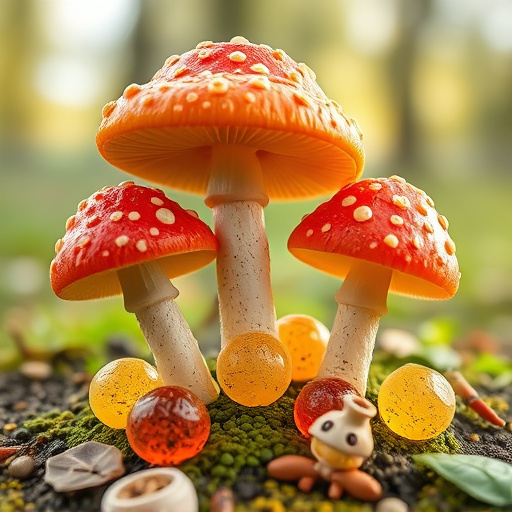
Magic mushroom gummies, as the name suggests, are a modern twist on traditional psychadelic experiences. But what makes them “magic”? The key active compounds responsible for their unique effects are psilocybin and psilocin. These compounds naturally occur in certain species of mushrooms and, when consumed, interact with our brain’s serotonin receptors.
Psilocybin, the primary compound, is a prodrug that converts into psilocin once absorbed. Psilocin binds to specific serotonin receptors, leading to altered states of consciousness, heightened senses, and profound spiritual experiences. Scientific studies have explored these compounds’ potential therapeutic benefits for conditions like depression, anxiety, and addiction, highlighting the science behind their “magic.”
The science behind magic mushroom gummies revolves around the psychotropic compounds psilocybin and psilocin, which have been studied for their therapeutic potential. As research continues to uncover the benefits of these natural substances, lab-tested magic mushroom gummies offer a safe and controlled way to explore their effects. However, it’s essential to approach this topic with caution and seek expert guidance, as the legal status and dosage variations can significantly impact the user experience. Understanding the science behind these gummies is a crucial step in navigating this evolving landscape.
